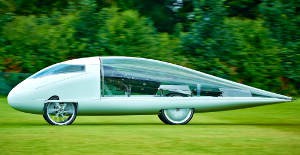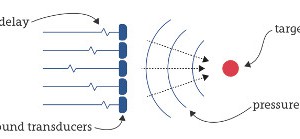Named after the UK creator of jet engines, the Sir Frank Whittle Medal is awarded by the Royal Academy of Engineering to an engineer for outstanding and sustained achievement. The field of activity changes every year and in 2013 the medal is being awarded for Engineering Innovations in Manufacturing. This year’s winner is a University of Manchester laser expert, Professor ...
University Electronics
The latest electronics news from UK universities
Cambridge and Bristol undergraduates design Asics
Swindon Silicon Systems is providing summer placements for two undergraduate engineers. The young engineers will work on real projects with the company that designs mixed signal Asics,which are used in mobile phones, sat navs and hearing aids. Robyn Moates, who is reading Electrical and Electronics Engineering at Cambridge, had placements in 2011 and 2012 with automotive electronics company Schrader, where she ...
Graphene promises femtosecond optical response for telecomms
Researchers at the universities of Bath and Exeter are investigating the use of graphene in telecommunications, according to a paper published in Physical Review Letters. The Centre for Graphene Science at the Universities of Bath and Exeter has demonstrated for very short optical response rates using graphene, which could pave the way – they say – for a revolution in ...
Surrey and Reading put GLOSS on satellite monitoring
Ensuring the UK plays a key role in providing satellite-sourced observation services – this is the aim of a new centre of excellence to monitor changes to the Earth and its ecosystem. Scientists at the Universities of Surrey and Reading will work with researchers at the National Physical Laboratory (NPL) in the new collaboration, which is called Global Satellite Sensing ...
University of Southampton stores 360Tbyte in quartz in 5D
Scientists at the University of Southampton have demonstrated a digital data recording processes that may allow data storage up to 360Tbyte on a single optical disc with “practically unlimited lifetime”. In the experiment at Southampton, a 300kbit digital copy of a text file was successfully recorded in 5D using ultrafast laser, producing extremely short and intense pulses of light. The file is ...
University of Cambridge students resolve to win World Solar Challenge
Cambridge students are aiming to be the first British winners of the World Solar Challenge, the 3,000km race from Darwin to Adelaide, which takes place in October. Their new solar car – “Resolution” – rewrites the rulebook for green vehicles, boasts the university. The prototype built by engineers at the University of Cambridge was unveiled in a road-test last Friday ...
Real-time 3D visual maps guide Samsung’s Roboray humanoid
A humanoid robot, Roboray, can build real-time 3D visual maps, to help it move around more efficiently. The system has been developed by researchers from the University of Bristol Apparently, by using cameras, the robot builds a map reference relative to its surroundings and it is also able to store where it has been before. This is seen as a ...
Ultrahaptics touchless technology wins £15,000 in business competition
A technology developed by a Computer Science PhD student, Tom Carter, and Professor Sriram Subramanian, has won top prize in a New Enterprise Competition. Ultrahaptics won £15,000 for its use of ultrasound to displace air, creating a pressure difference. Apparently, a noticeable pressure difference can be created and be felt by the human hand. Accorind to its inventor, the us ...
EPSRC grant for harvesting thermal energy using nanodiamond
A renewable energy project has received funding from the Engineering and Physical Sciences Research Council (EPSRC). Pursuing new approaches to harvesting thermal energy using nanodiamond, it has been awarded a grant of £951,947. The project in question is ‘Beta-enhanced thermionic energy converters and nuclear batteries employing nanostructured diamond electrodes’, and it began in April 2013, to run for 42 months. ...
New WiFi test process combines 3D antenna measurements with in-home modelling
Researchers at the University of Bristol’s Communication Systems and Networks (CSN) Group have announced a new WiFi test process that combines 3D antenna measurements with in-home virtual reality modelling. The work has already been used to evaluate and optimise the performance of Virgin Media’s new Super Hub WiFi router. Professor Andrew Nix from the CSN Group, in the Department of ...
 Electronics Weekly Electronics Design & Components Tech News
Electronics Weekly Electronics Design & Components Tech News








